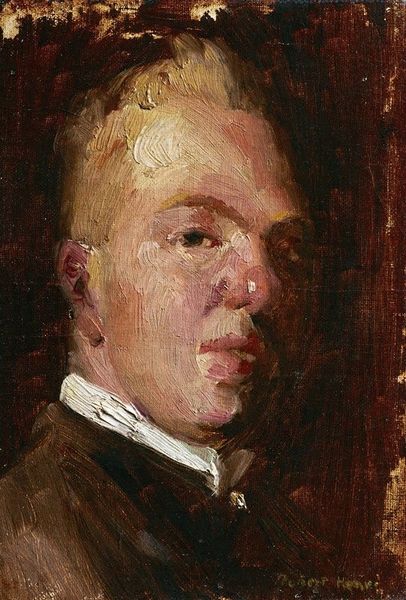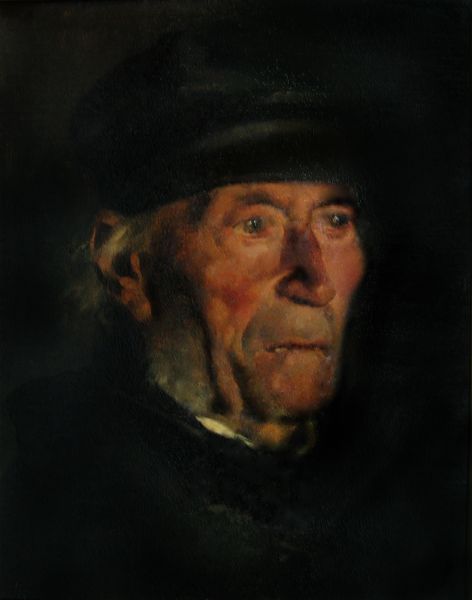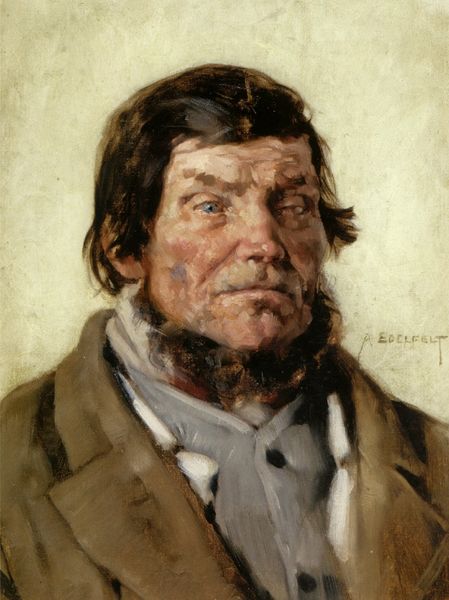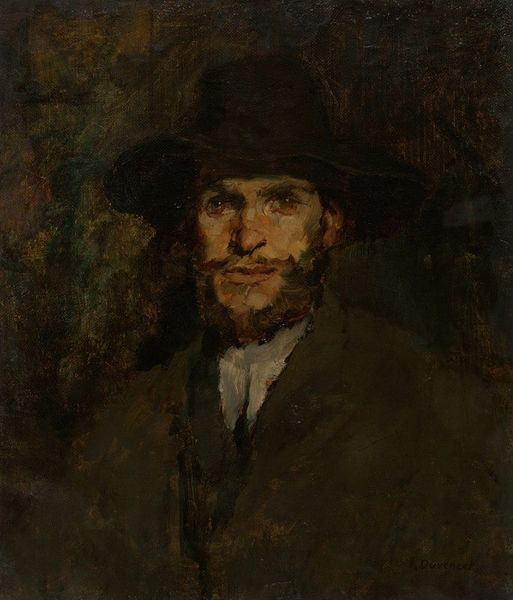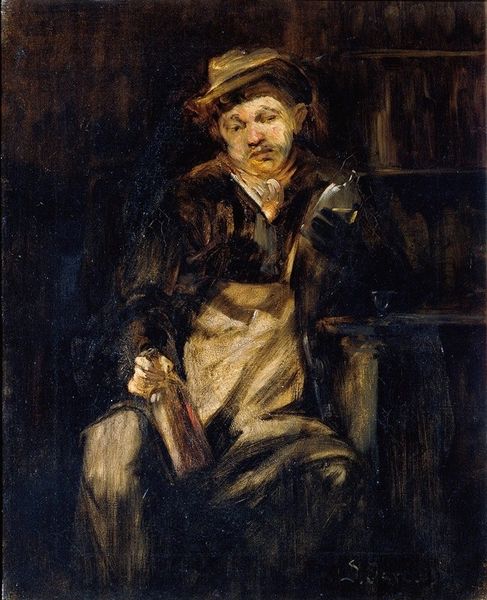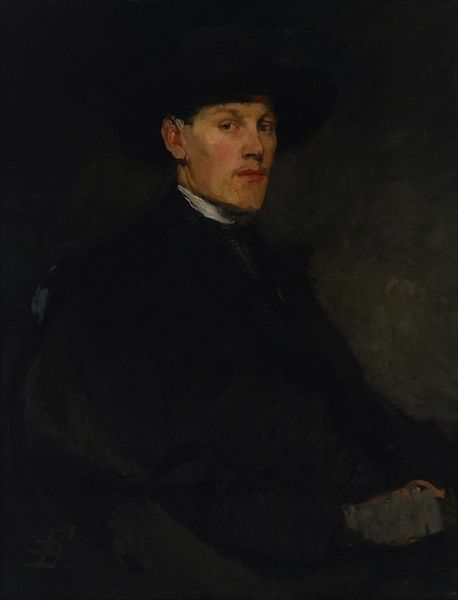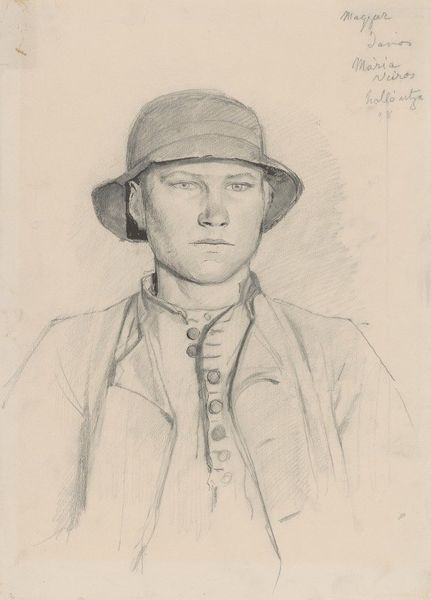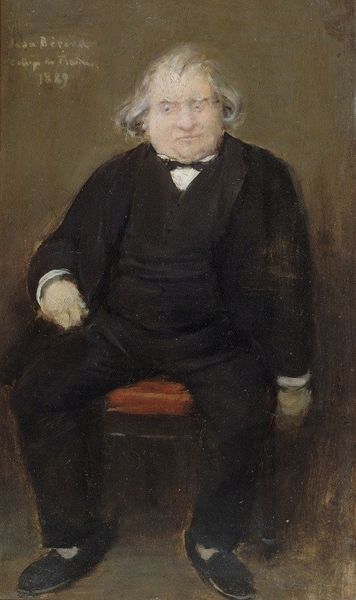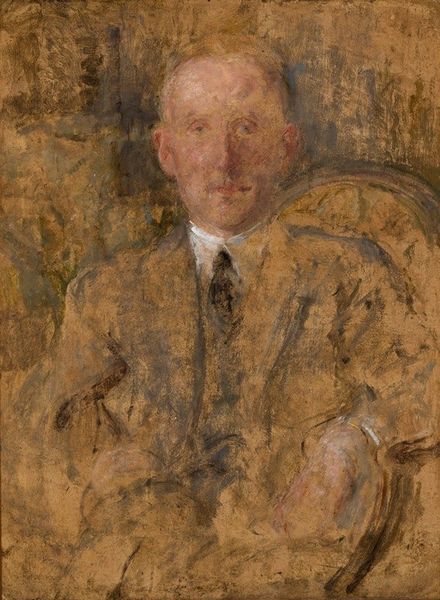
oil-paint
#
impressionism
#
oil-paint
#
oil painting
Copyright: Public Domain: Artvee
Editor: Here we have Edgar Degas’ oil painting "Jérôme Ottoz," created circa 1875-1877. It's a rather somber piece, dominated by muted browns and featuring a close-up of a man wearing a cap. How do you interpret this work, focusing on its compositional elements? Curator: Immediately striking is Degas' employment of color. The restricted palette—primarily ochres and browns—creates a profound sense of unity. Note how the subtle variations within this limited range articulate form and texture, from the fabric of the cap to the flesh tones of the face. Degas minimizes value contrast, focusing instead on nuanced tonal gradations, no? Editor: Yes, I see how the limited palette contributes to the unity of the piece. But what about the brushwork itself? It seems quite expressive, almost unfinished in places. Curator: Precisely! The visible brushstrokes are critical. Consider their direction and weight; how they sculpt the forms and delineate edges. Are they uniform? Are they applied with equal intensity throughout the composition? Where are the areas of greatest textural interest? Note, too, the absence of hard lines, giving way to softer transitions and blurred contours, evoking immediacy and atmospheric quality. Editor: It's amazing how much depth comes through just through analyzing these aspects. Thanks, I will never look at Degas the same way. Curator: Understanding form through close attention to the formal elements of art allows us a different way to appreciate an artist’s vision, beyond subject. We find, too, how that vision operates outside context.
Comments
No comments
Be the first to comment and join the conversation on the ultimate creative platform.
